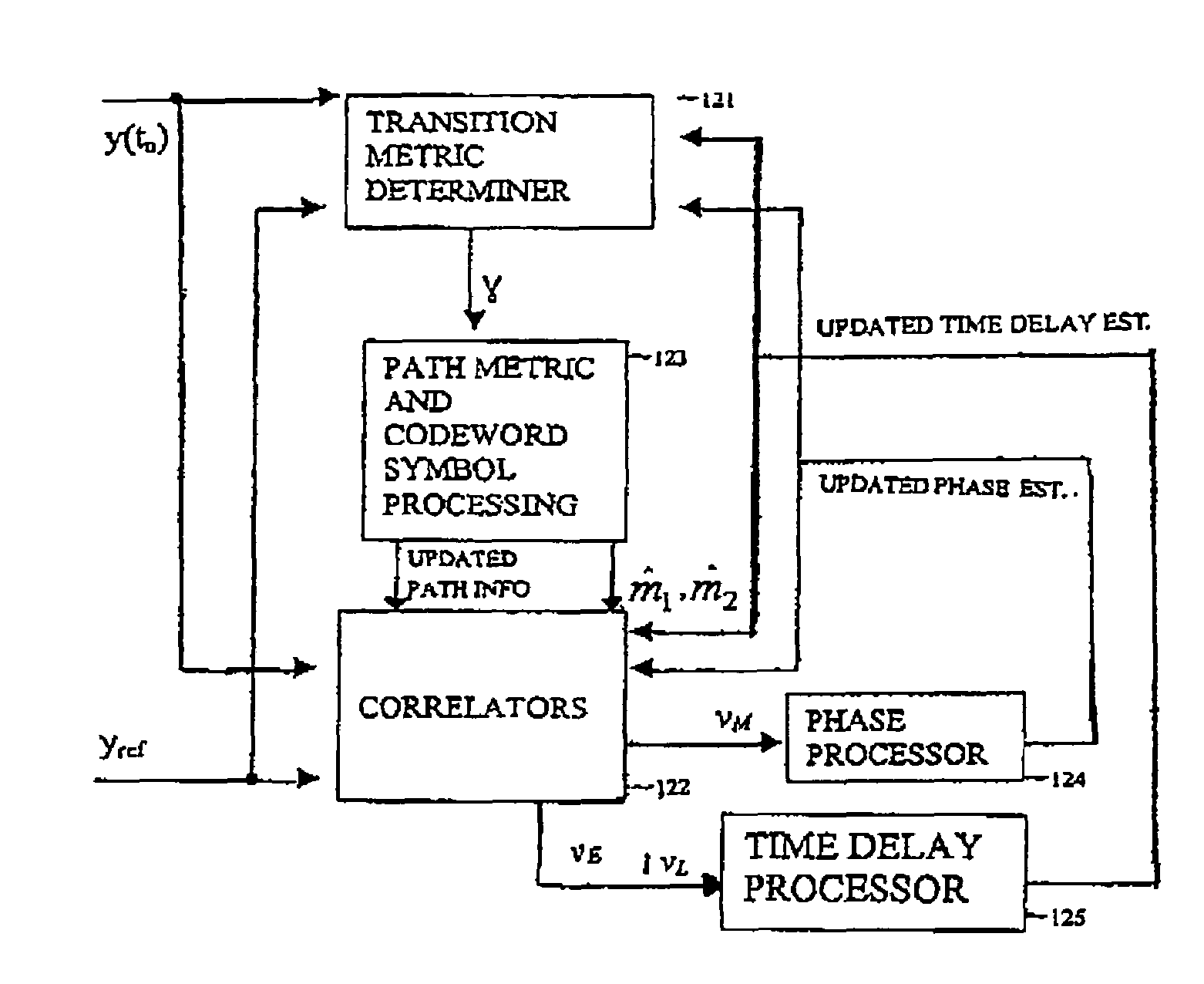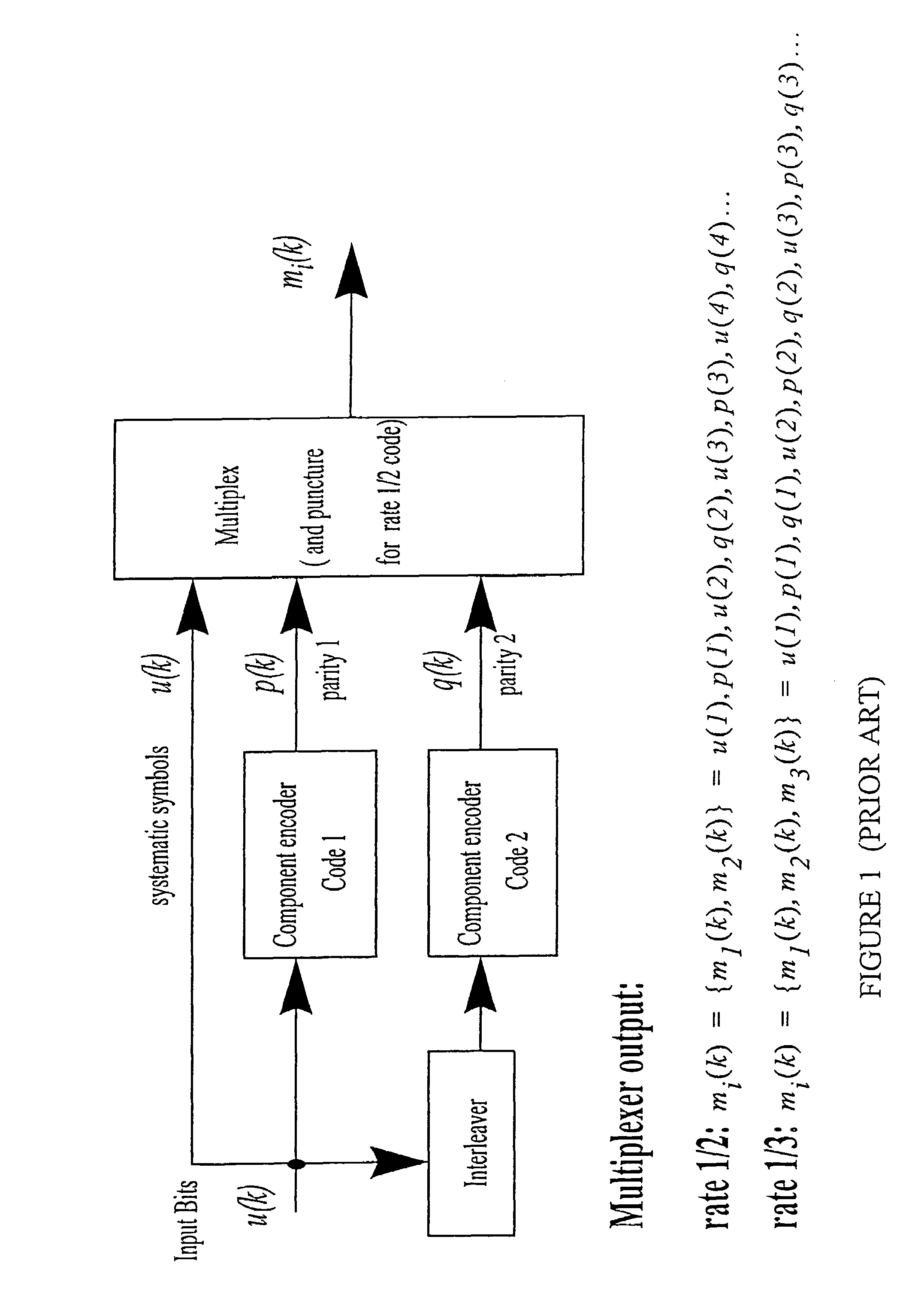Using convolutional decoding to improve time delay and phase estimation in digital communications
- Summary
- Abstract
- Description
- Claims
- Application Information
AI Technical Summary
Problems solved by technology
Method used
Image
Examples
Embodiment Construction
[0031]The present invention recognizes that Turbo codes can operate with very low symbol energy to noise power density ratios values (Es / N0<0 dB), and that DPLL performance will improve if the SNR at the correlator output is increased by removing the data modulation and coherently integrating over more than one symbol. The invention further recognizes that SNR can be increased by increasing the coherent integration time of the early, middle, and late correlators. However, the coherent integration interval cannot be increased without first removing the unknown data symbol modulation.
[0032]The invention provides a novel approach to solve this problem. This approach integrates the DPLL into a convolutional decoder algorithm (e.g., a Viterbi algorithm), and uses the estimated symbols from within the decoding process to remove a set of one or more unknown data symbols prior to the correlators (i.e., integrate and dump operation) used in the standard DPLL method.
[0033]This results in two ...
PUM
 Login to View More
Login to View More Abstract
Description
Claims
Application Information
 Login to View More
Login to View More - R&D
- Intellectual Property
- Life Sciences
- Materials
- Tech Scout
- Unparalleled Data Quality
- Higher Quality Content
- 60% Fewer Hallucinations
Browse by: Latest US Patents, China's latest patents, Technical Efficacy Thesaurus, Application Domain, Technology Topic, Popular Technical Reports.
© 2025 PatSnap. All rights reserved.Legal|Privacy policy|Modern Slavery Act Transparency Statement|Sitemap|About US| Contact US: help@patsnap.com



